They’re back
This week: They’re back!; Was it a coincidence?; Double glazed almost everywhere; In an English country garden…;
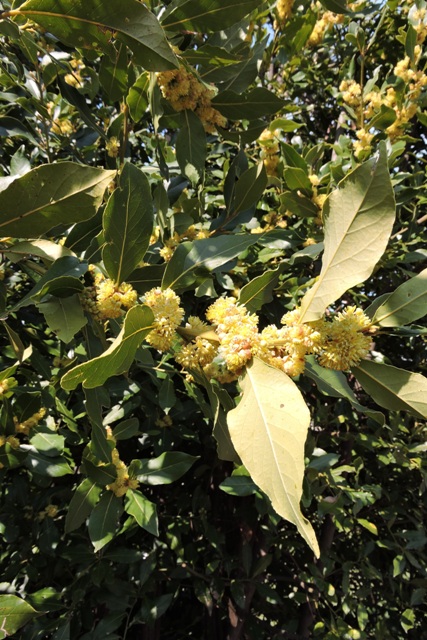
I doubt many readers will be able to recognise or name the blossom in the photograph above.
This large multi branches shrub is a Laurus nobilis and it is a native of the Mediterranean Basin. It has been used for millennia as a seasoning herb.
Generally when you think of herbs, you think of small plants or shrubs. Seldom a five or six meter tall tree.
The leaves might give the name away. They usually come in glass jars in the supermarket. It is a Bay tree. I save a few leaves, dry them and use them in my kitchen.
At this time of year the tree is covered in pale yellow flowers. The blossom gives of a strong, sweet scent and is very attractive to bees.
It has been another very busy week. I’ve been working both inside and out, doing the chores like “spring cleaning” and weeding.
We have lost the cool northern airflow caused by the Polar Vortex. So with the sun high in the sky, I have been in a tee shirt all week.
In a week, I have gone from needing my thick NATO sweater, to a light zip top, to tee shirts.
Next I’ll be breaking the summer shorts out of storage….
They’re back
As I wandered onto my terrace at lunch time on Tuesday and there was no manmade noise. No planes flying overhead: No distant traffic noise: No voices or dogs barking: No clanking or buzzing garden machines, nothing.
What I could hear, for the first time this year, was a Nightingale, singing it’s heart out from a tree at the end of the orchard.
The Nightingdale is one of my indicator species for my Springwatch calendar.
When I added the date to my spreadsheet, my garden bird is here ten days earlier than last year. This is three consecutive years when the birds have arrived earlier than the previous year.
I wrote about the Nightingale migration in an April 2019 blog.

These diminutive and somewhat dowdy-birds over winter in sub-Saharan Africa, then begin their journey north in late January.

On Wednesday there were another four different birds calling from all around my home.
I have yet to really see one. They sing their beautiful song, hidden from view in deep foliage and thickets. When you try and get close, they go quiet.
On Wednesday when I was working outside, a Nightingale was singing from my Almond tree. I couldn’t see it, but could hear it.
Every year one sings from this particular tree. However although I think it is the same bird returning, I have no proof.
It might be an offspring from the previous year’s brood which has returned.
These early returning migrants are a herald of the approaching summer.
Was it a coincidence?
After mentioning in last week’s blog about the missing doors and windows, I received a phone call on Monday tea time, to say the company would be here on Tuesday between 10 and 10:15.
I was up early making preparations. Then spot on 10:15 they arrived, having driven up from Dubrovnik and coming over on the ferry to Sucurai.

In the cottage, the fitting of the door and window went as planned. However, the craftsmen needed to do quite a lot of adjustment for the Konoba doors.
The problem was the odd shaped stones which make up the frame and arch.
I know all about that!
When I moved in, the animals had only just been moved out, so there had been little need for a close fitting door.

The old doors were neither weather nor vermin proof.
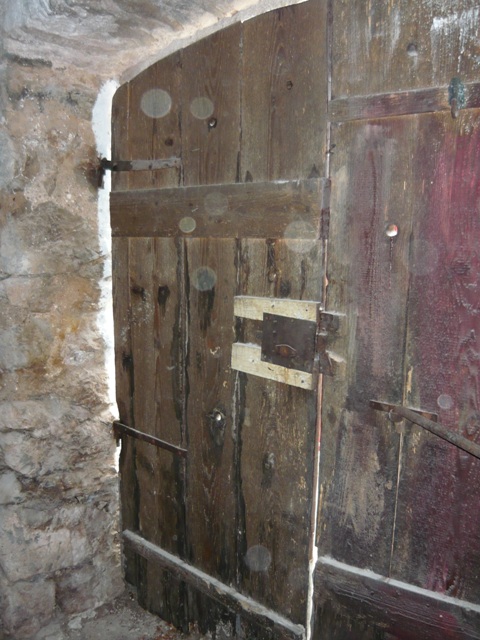
One of my first jobs was to make a new set of wooden doors, and then to cut profiles for both sides, to stop drafts and mice getting in.
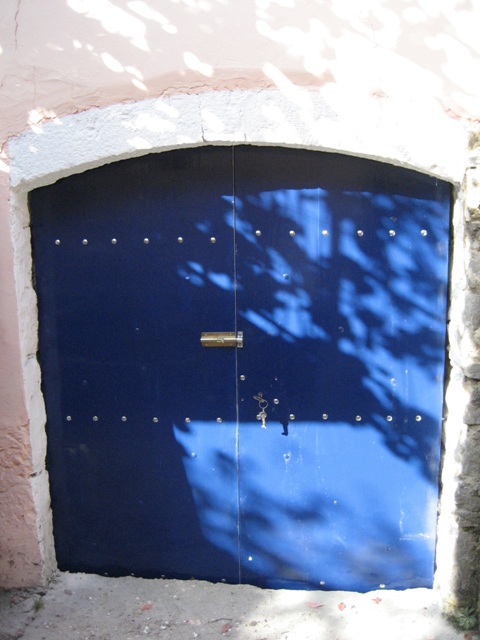
In the intervening years, I’ve given the doors a couple of coats of paint. But Tuesday was the day to unbolt them and remove the hinge pins from the wall. The paint has faded in our bright sunlight.

So now I have a set of substantial doors up for sale. The problem is that no two Konoba entrances on the island are the same.
So they will fit something smaller, after cutting, but it will be difficult to add any material to make them bigger!
Double glazed almost everywhere
After a couple of hours work, I now have my new doors and windows fitted.
I have to say I am delighted with them. The double glazed units are extremely well made, fit perfectly, look really, really nice and are perfectly in keeping with my buildings.
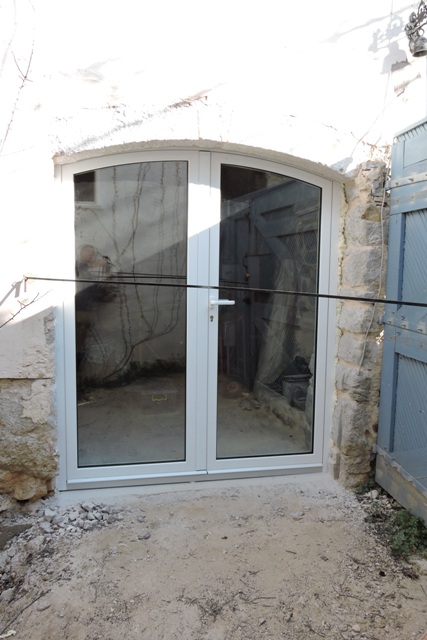
They have completely transformed the inside of the Konoba, letting bright sunlight in and lighting up the inside.
The cottage is the first of my buildings to have been completely renovated from top to bottom. It was the last on the list, but because of the continuing problems of getting planning permission, it is the first.
The doorway is wider than normal, to make it easy to get the refrigerator, freezer and washer in and out.
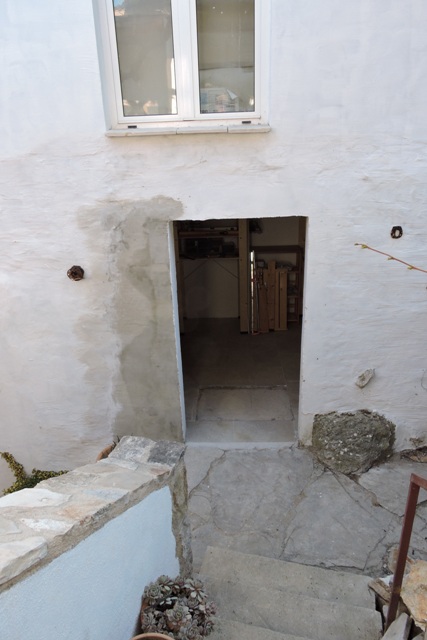
I decided to have just a single door, rather than a 1¼, with two opening panels.
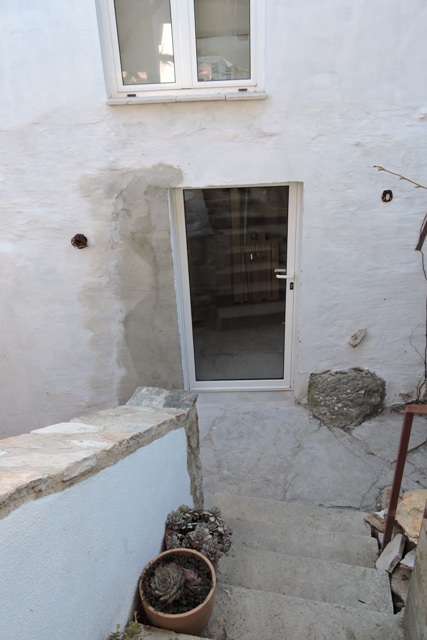
One thing I have done is to have all locks keyed the same, so just a single KABA security system key will open and unlock all doors, padlocks and windows.
This is the place where there was a door, when the ground floor of the cottage was divided into two parts.
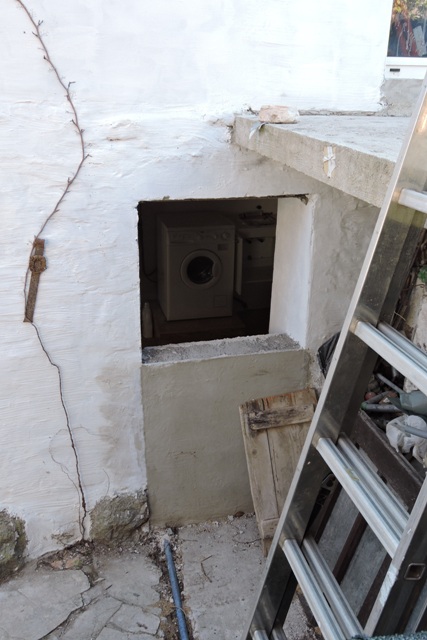
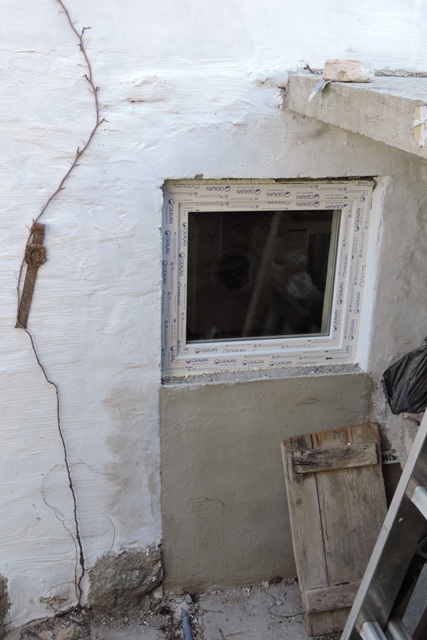
The window will tilt for ventilation or open fully. I have put a mosquito net across it so that in summer I can leave the window open 24/7.
All in all, the wait has been worth it and I am delighted with the result.
In an English Country Garden…
Growing up in northern England, I was aware of the “country garden” both in theory and through visiting places like the RHS Harlow Carr gardens in Harrogate.
And at home we had a flower garden with many of the flowers mentioned by Jimmie Rodgers.
What has surprised me since I moved to Dol, is how many of the plants which I assumed to be traditional British or English, are actually of Mediterranean origin.
Very many of these plants were spread around Europe two millennia ago by the Romans.
Then later in the 18th and 19th centuries by the plant collectors and Botanist’s of the various European Royal Courts.
What I have not set out to do is to replicate an English garden here in the Mediterranean. What I have found is that plants that I like, are originally from somewhere in the Mediterranean basin.
In the spring, plants like Forsythia Intermedia are covered in bright yellow flowers. These flowers radiate yellow light in the spring sunshine.

Another yellow flowering shrub is Kerria japonica, imported from China along the spice road. These yellow globes are long lasting and it will flower twice in the spring and again in the autumn.
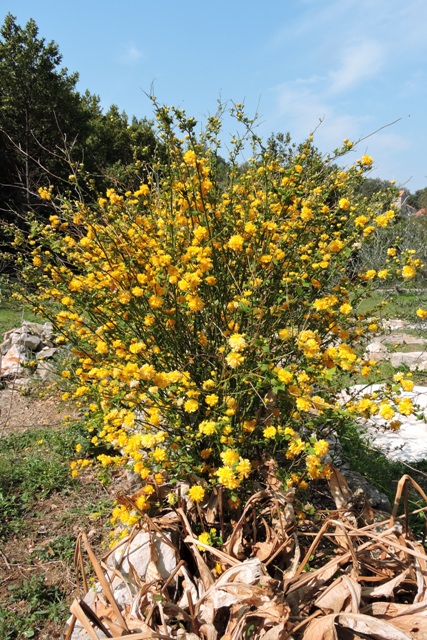
My new border is starting to look lovely with different coloured Anemones, another native Mediterranean plant.
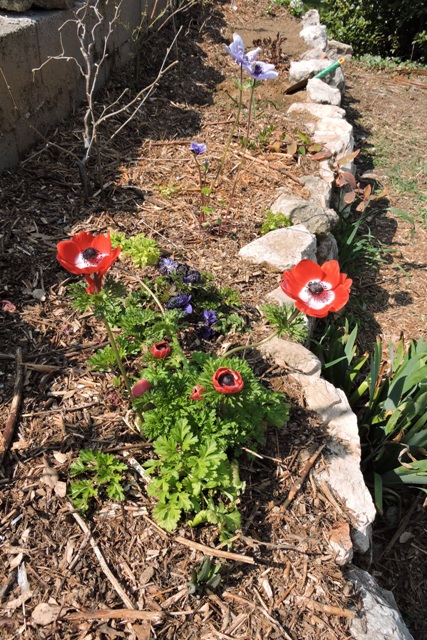
Elsewhere I have Violets and Sedum in flower.
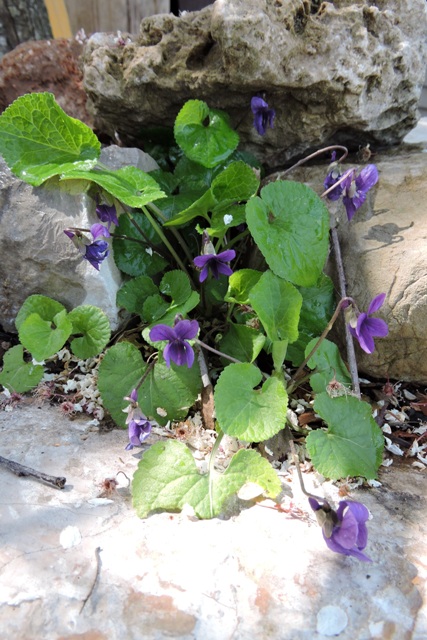
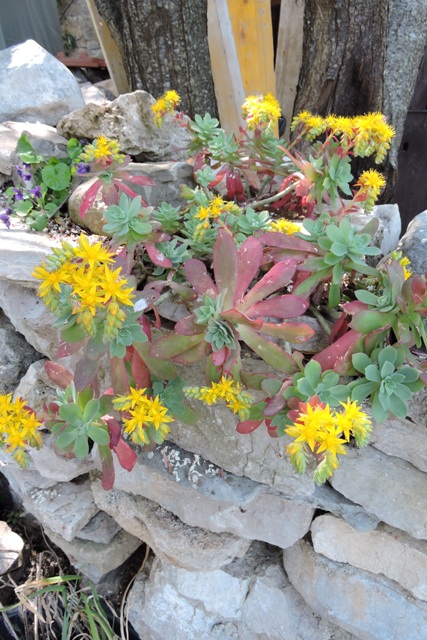
The sun was shining brightly as I walked round the orchard today checking the trees. I was a little surprised to see this small fella on one of my Sweet Cherry trees.
It’s a Weevil and is a less than welcome guest.
Weevils are pests because they are herbivores. They burrow into thick stems, and can eat their way through a lot of greenery.
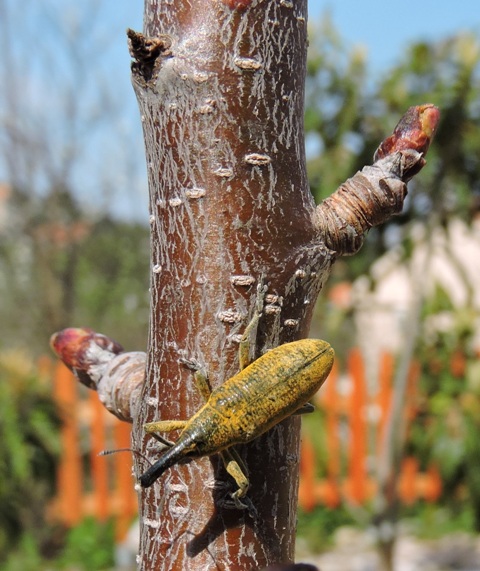
This little chap has been at the pollen. His whole of his body is completely covered by grains of golden yellow pollen.
However I am not sure if he was eating the pollen or was eating the flowers and just rubbed past the pollen.
These I suspect have come from the nearby Bay tree.
I have not seen any Weevil damage on my Cherry trees, or any other kind of insect damage for that matter. But that of course doesn’t mean there isn’t any, I have just not seen it – yet!
But what happened next was even more interesting. The Weevil started to move, so I tried to get a better photograph of it, in the sunlight.
Then it di a hasty exit to the right and flew over my neighbours wall. However it was not before I had taken a photograph.
As the little insect took off, some more movement on the stem of the Cherry tree. There was a “Jumping Spider” which had moved up the stem, in the shadow and was obviously looking for his lunch.

That was clearly why Mr. Weevil was in such a hurry to depart from my tree.
I do not use any insecticides or sprays of any kind that kill insects. Rather I leave pests to their natural local predators.
However this is the first time that I have actually seen a Jumping Spider actually hunting something as large as a Weevil.
It is another very good reason to never kill a spider… NCG
4 Responses
Marcy
Norman, what a thrill it must have been to get the windows and doors. They are simply wonderful. The double door is amazing there. I’m excited for you.
Thank you for the beautiful photos. Your trees and border is really something special. I love the flora and fauna.
It’s warm today, but more cooler weather next week. By the second week in April, I may be able to turn on my water sprinklers. Grass is getting green from the recent small bits of snow. I’m ready for spring and summer, and rain of course, but cold and snow needs to be done.
Have a wonderful week. Thank you, as always, for sharing. Always so interesting.
Andy Robinson
I’ve got a bay tree….it came from my parents house in Lockington as an ornamental Bush in a pot….I planted it ou and now it’s taller than me and also wider than I am!…I too use the leaves but I don’t recall seeing any blossom on it. I must remember to check. Your windows look ace.
Michael Charlton-Weedy
Nice work Norman. Just be aware that your anemones will creep by sending out runners after flowering and create new roots. After a couple of years you may have far more than you wish!
Mrs Brenda Fairfull
Looks amazing !!!